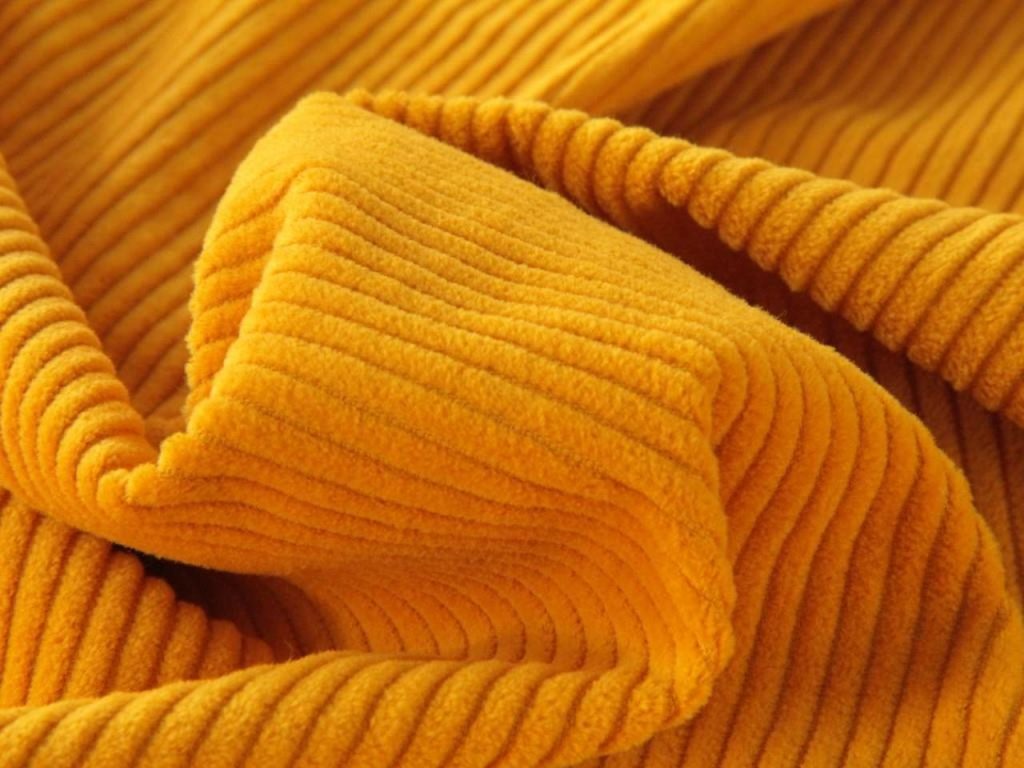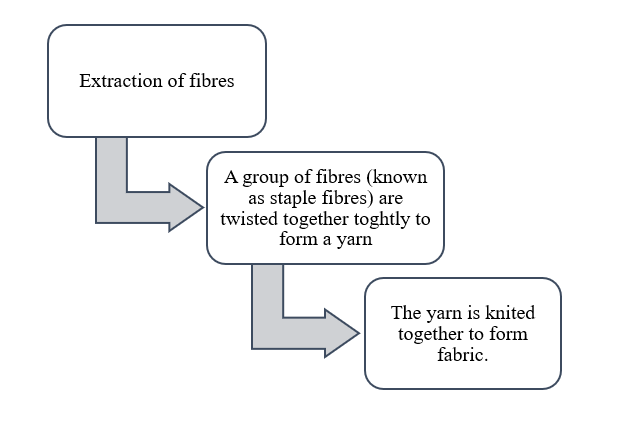
NCERT solutions for class 7 science chapter 3 Fiber to Fabric – Fiber to Fabric is an important topic as basic human needs not only include food and shelter but also includes clothes which we wear according to the climate and season or even current fashion trends. Further, all these clothes are prepared from fibers. Fabrics are made by using fibers by knitting and weaving them to make clothes and apparel.

There are two types of fibers:
Natural fibers are thin hair-like materials that are obtained from plants and animals (Such as cotton, silk, fur etc.) while synthetic fibers are those that are man-made with the help of technology and machines. (For example, rayon, nylon, etc.)
PROCESSING OF FIBRE TO FABRIC

Class 7 science chapter 3 Fiber To Fabric: Wool
Wool is obtained from animals like sheep, goats and yaks as they have thick and hairy layer above their skin. Further, there are many breeds of sheep all around the nation. However, their fleece is not the only source of wool, however, it is the most common source. For example, we can obtain Llama wool from Ladakh, Mohair wool from Jammu and Kashmir. Two types of fibers obtained from sheep –
- Coarse beard hair – this is unsuitable for making wool
- Fine soft under-hair close to the skin – this is used to make wool. There are certain species of sheep that only have this type of skin and are chosen for this purpose. This process where parents are selected to obtain this character in their offspring is known as selective breeding.
The wool from sheep in Jammu and Kashmir are soft and are woven into shawls that are known as pashmina shawls. The fur from camels and Alpacas in other countries like South America also yield wool
Read more: NCERT Solutions For Class 7 Science Chapter 2 Nutrition In Animals
Some Indian breeds of sheep
| Name of Breed | Quality/ Use of Wool | Location |
| Lohi | Good | Rajasthan, Punjab |
| Rampur bushair | Brown fleece | Uttar Pradesh, Himachal Pradesh |
| Nali | For Carpet | Rajasthan, Haryana, Punjab |
| Bakharwar | For shawls | Jammu and Kashmir |
| Marwari | Coarse wool | Gujrat |
| Patanwadi | For hosiery | Gujrat |
From Fiber to wool
Rearing and breeding of sheep: If one goes to hilly areas like Himachal Pradesh, Uttaranchal, Sikkim, etc. or plains like Haryana, Punjab, Gujrat, etc, one will find shepherds taking their sheep to graze in the field as they are herbivores cattle. Further, they are fed a mixture of pulses, corn, jowar, oil cakes and minerals as well.
Process of making wool fabric

FIBER TO FABRIC: SILK
Silk is a type of animal fiber that comes from a silkworm that spins silk. The rearing of silkworms is known as sericulture which is very common in India. The female silk moth then lays eggs from which larvae or caterpillars hatch. The caterpillar then weaves itself a net to hold itself which is known as the pupa stage in a cocoon. When the caterpillar swings itself to create silk, it secretes a fiber which is rich in protein that hardens due to the air and produces silk fibers.
There are a variety of silk moths that looks different and yield different textures of silk like tassar, mooga, kosa, etc. The most common one is mulberry silk moth.
From cocoons to silk
Rearing silkworms: a female silk moth lays hundreds of eggs at a time which are stored on strips of cloth by a sericulturist under suitable temperatures. Larvae then hatches from the eggs and the silkworms eat a lot from the trees and increase in size. They are kept in bamboo trays with fresh mulberry leaves. After 25-30 days they start making their cocoons in the leaves.
Processing silk
A pile of cocoons is used to get silk fibers. The cocoons are kept under the sun or boiled. The process of taking out the threads is known as reeling the silk which is done in machines which unwind the threads from the cocoon which is then used by weavers to make silk fiber to fabric.
QUESTION AND ANSWERS – NCERT solutions for class 7 science chapter 3 Fiber to Fabric
- Where is wool obtained from?
Answer: Wool is obtained from animal fibres and is taken from the hairy layer on the skin of sheep.
2. Is a silkworm a caterpillar or larvae?
Answer: A silkworm is both a caterpillar and larvae.
3. Which of the following does not yield wool?
Yak b. Camel
Goat d. Wooly dog
Answer: (d) Wooly dog
4. What is meant by rearing?
Answer: Raising cattle such as cows, sheep, yaks, etc. for commercial purposes of making profits.
5. What is meant by Shearing?
Answer: This is the process by which thick hair is removed from the sheep to produce wool.
6. What is sericulture?
Answer: This is an occupation where farmers rear silkworms to make silk fibres.
7. What are the steps in the process of making wool?
Answer: Shearing -> scouring -> sorting -> picking burrs -> dying fibres -> making yarn
8. Make a sketch of the stages in the life of a silk moth.
Answer:

9. Match Column I with Column II
| Column I | Column II |
| Scouring | Yield Silk fibres |
| Mulberry Leaves | Wool Yielding animal |
| Yak | Food of silkworm |
| Cocoon | Reeling |
| Cleaning sheared skin |
Answer:
| Column I | Column II |
| Scouring | (e) Cleaning sheared skin |
| Mulberry Leaves | (c) Food of silkworm |
| Yak | (b) Wool yielding animal |
| Cocoon | Yields silk fibres |
- 10. Complete the crossword puzzle with the following hints:
Down: Across:
D1 – thorough washing A1 – Keeps warm
D2 – animal fibre A2 – Its leaves are eaten by silkworms
D3 – Long Thread like structure A3 – Hatches from egg of moth

Answer:

Frequently Asked Questions (FAQs)
- Name another term used for sericulture
Answer: Moriculture
2. Name the types of fibers
Answer: There are two types of fibers: Natural fibers (this is further divided into plant fibers and animal fibers) and synthetic fibers that are man-made.
3. Why is shearing done in the hot seasons
Answer: This is done to enable the sheep or goat to survive without their protective layer or coat of thick hair.